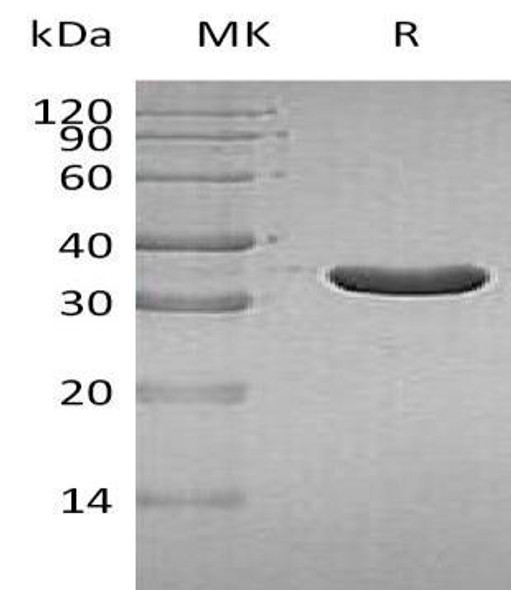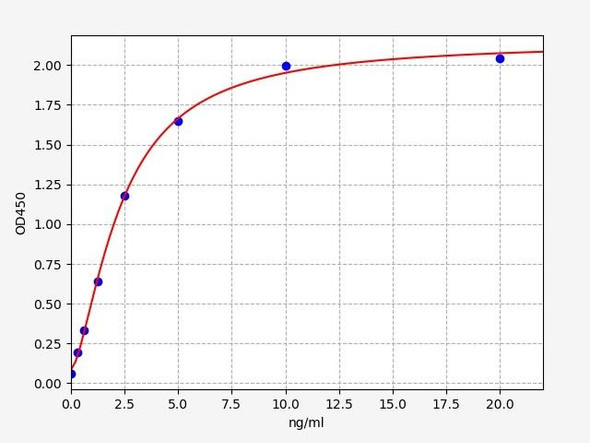Description
| Product Name: | Human IA2/PTPRN Recombinant Protein (aa 576-950, His Tag) |
| Product Code: | RPES5274 |
| Size: | 20µg |
| Species: | Human |
| Expression Host: | E.coli |
| Synonyms: | Receptor-type tyrosine-protein phosphatase-like N, R-PTP-N, Islet cell antigen 512, ICA 512, Islet cell autoantigen 3, PTP IA-2, PTPRN, ICA3, ICA512 |
| Mol Mass: | 44.6 kDa |
| AP Mol Mass: | 50 kDa |
| Tag: | N-His |
| Purity: | > 95 % as determined by reducing SDS-PAGE. |
| Endotoxin Level: | < 1.0 EU per μg of the protein as determined by the LAL method. |
| Bio Activity: | Testing in progress |
| Sequence: | Arg576-Gln950 |
| Accession: | Q16849 |
| Storage: | Generally, lyophilized proteins are stable for up to 12 months when stored at -20 to -80°C. Reconstituted protein solution can be stored at 4-8°C for 2-7 days. Aliquots of reconstituted samples are stable at < -20°C for 3 months. |
| Shipping: | This product is provided as lyophilized powder which is shipped with ice packs. |
| Formulation: | Lyophilized from sterile PBS, pH 7.4., 5% trehalose, 5% mannitol, 0.01% tween-80. Normally 5 % - 8 % trehalose, mannitol and 0.01% Tween80 are added as protectants before lyophilization. Please refer to the specific buffer information in the print |
| Reconstitution: | Please refer to the printed manual for detailed information. |
| Background: | Receptor-type tyrosine-protein phosphatase-like N (PTPRN) belongs to the protein-tyrosine phosphatase family and receptor class 8 subfamily. PTPRN contains 1 tyrosine-protein phosphatase domain; is expressed in neuroendocrine cells only. PTPs are known to be signaling molecules that regulate a variety of cellular processes including cell growth; differentiation; mitotic cycle; and oncogenic transformation. It implicated in neuroendocrine secretory processes. It may be involved in processes specific for neurosecretory granules; such as their biogenesis; trafficking or regulated exocytosis or may have a general role in neuroendocrine functions. It seems to lack intrinsic enzyme activity; may play a role in the regulation of secretory granules via its interaction with SNTB2. This PTP was found to be an autoantigen that is reactive with insulin-dependent diabetes mellitus (IDDM) patient sera; and thus may be a potential target of autoimmunity in diabetes mellitus. |






